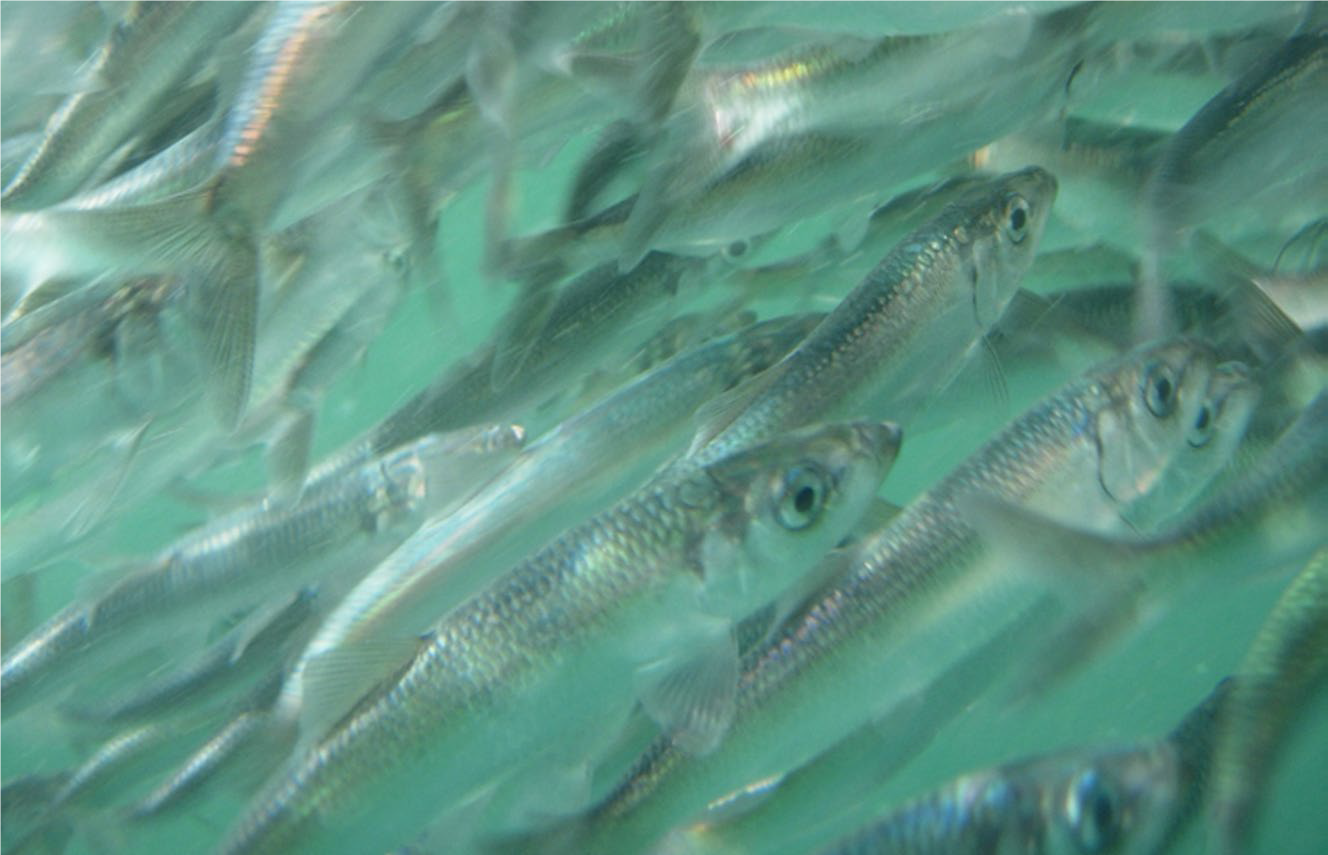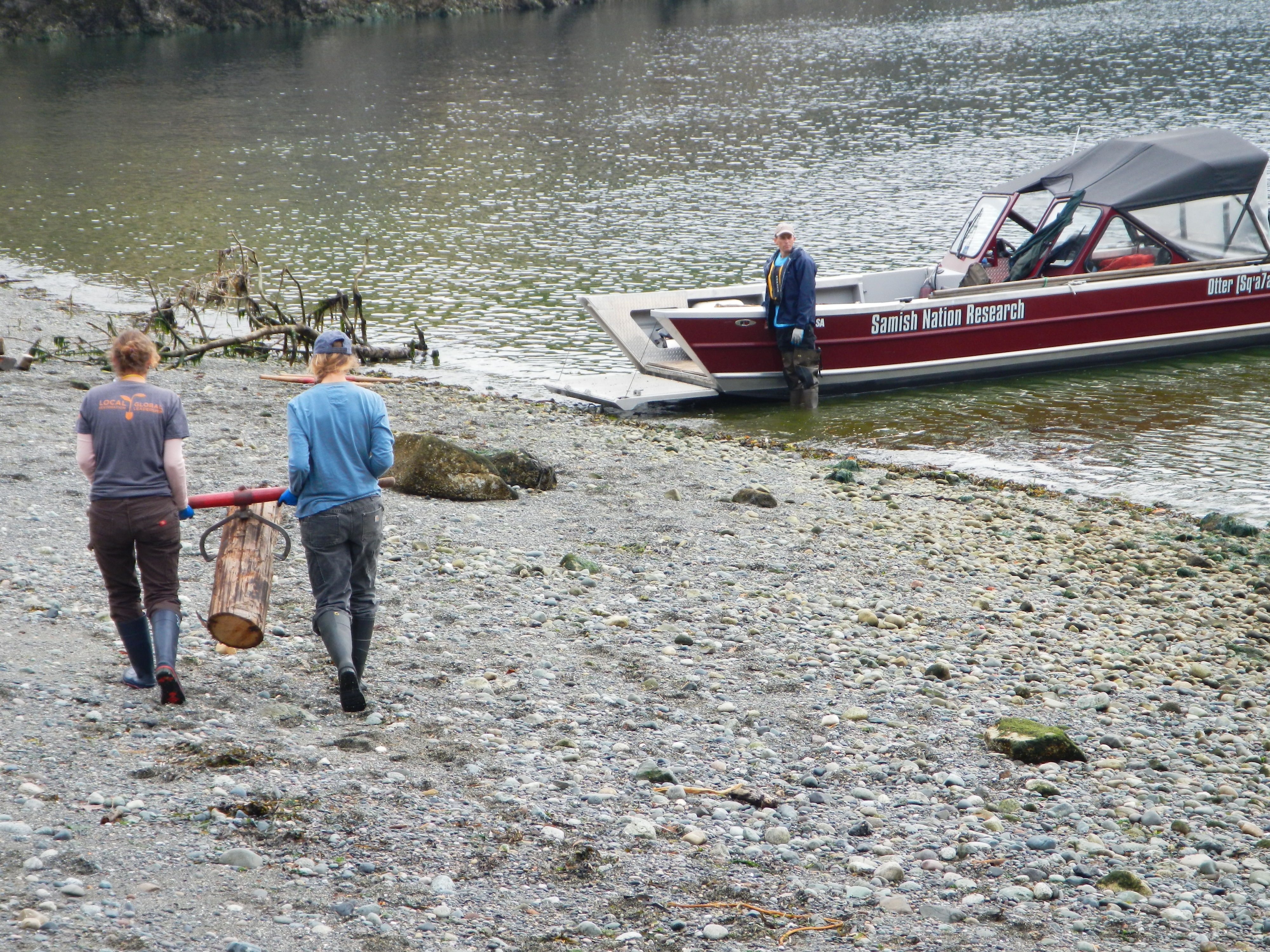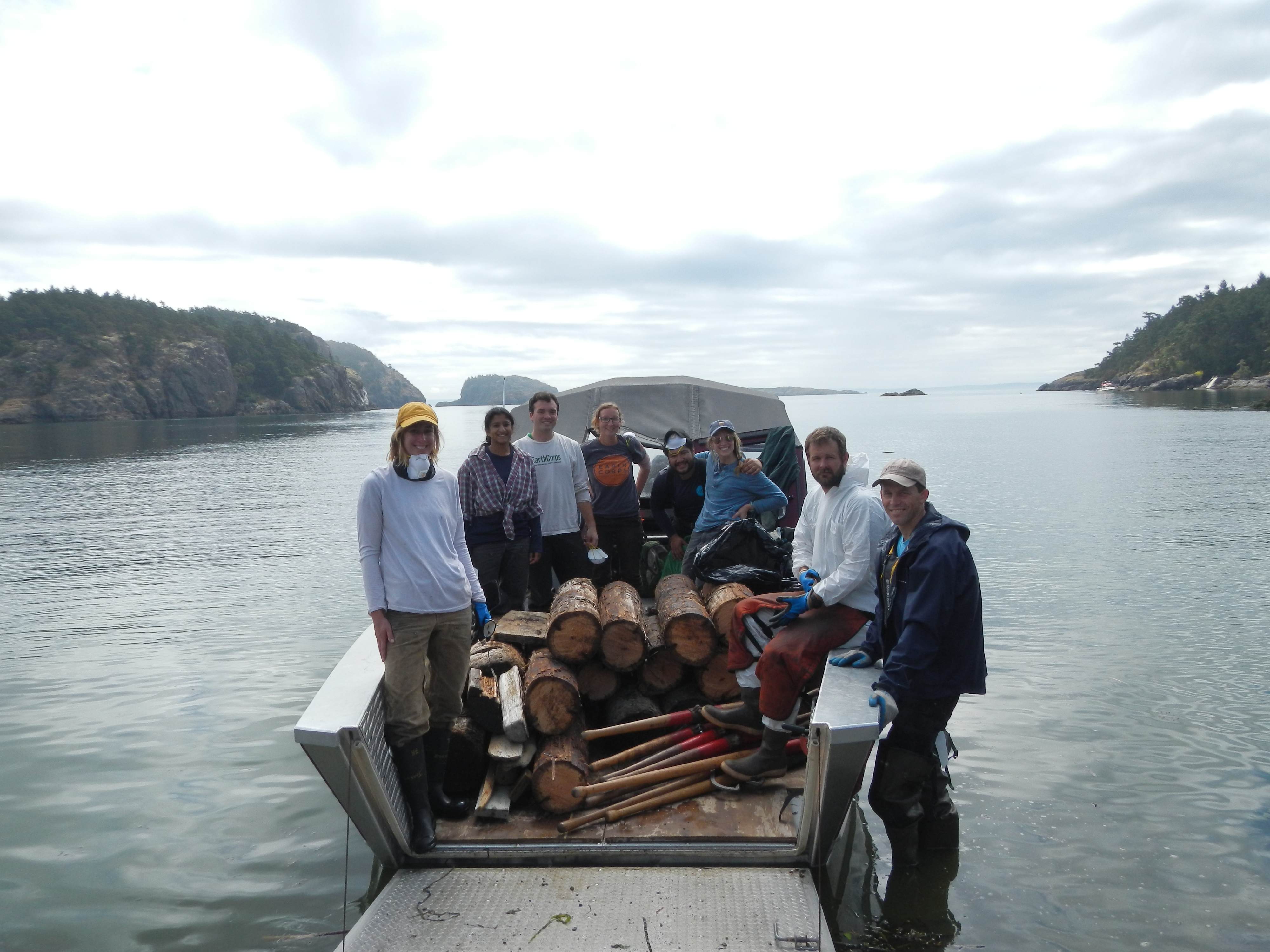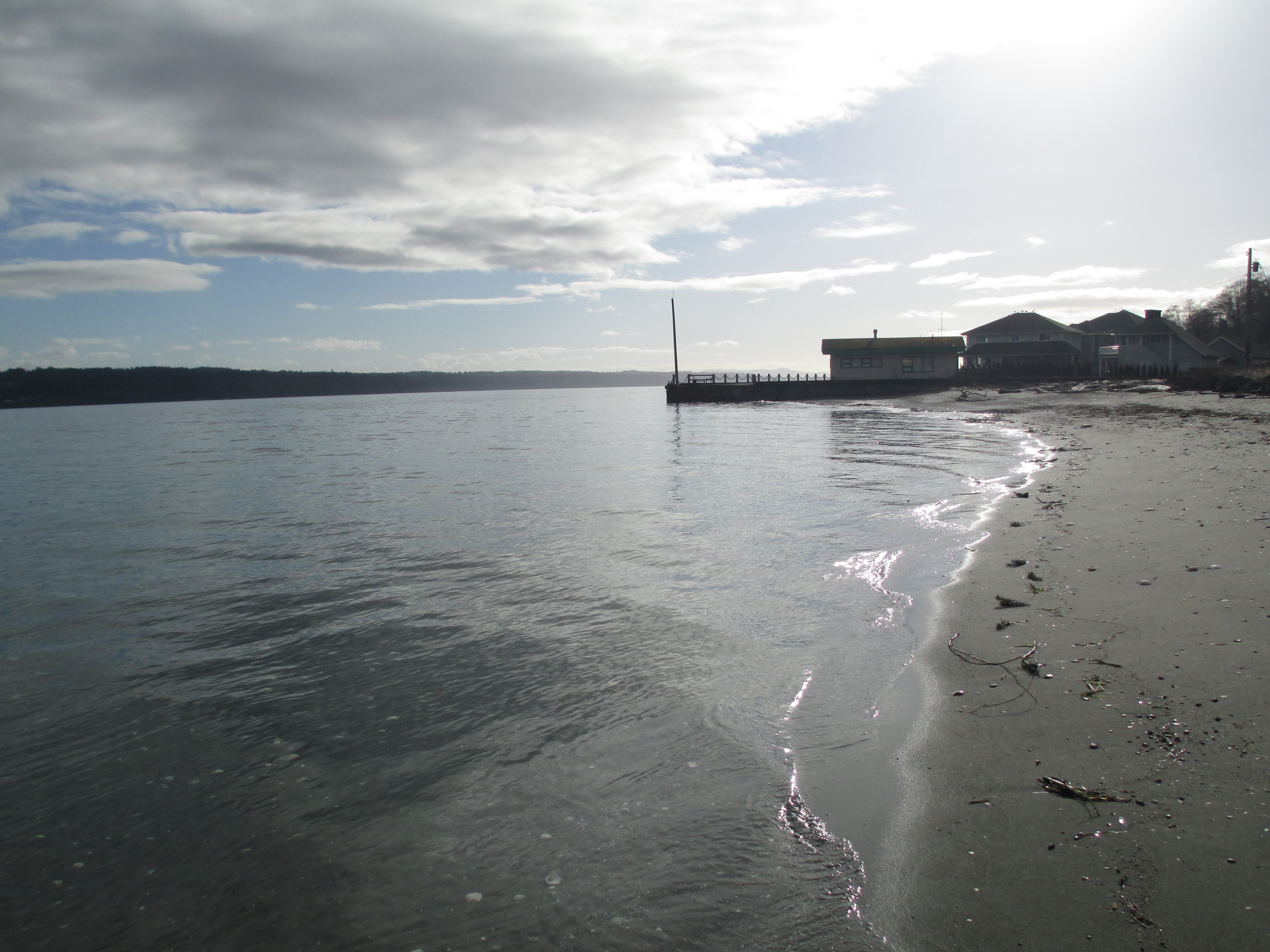Chambers Bay was the site of the 2015 United States Golf Association U.S. Open tournament. Hood Canal is home to the deepest part of Puget Sound. Both are beautiful places—but herring don’t care about the scenery. They come to spawn.
These sites, along with other locations around Puget Sound, share a problem: toxic creosote pilings, which leach toxins into the water. Creosote is used as a wood preservative, making it useful when building piers in salt water, but creosote is problematic for fish and other living things. The toxins in creosote make it difficult for herring eggs to survive, and are harmful to other wildlife and humans.
The Washington State Department of Ecology, with a grant from the National Estuary Program, worked to enable the Washington State Department of Natural Resources to remove pilings along Hood Canal. The agency also worked with Pierce County to do the same along Chambers Bay. In both projects, grant recipients more than doubled their initial goal for removing pilings.
More than 1,335 tons of toxic creosote-treated debris were removed from Hood Canal. In total, 894 creosote-treated piles and 4,600 square feet of overwater structures were removed from seven sites. Pierce County removed 250 pilings, 112 of which contained creosote.

The success of this federal investment and state and local leverage triggered a $2.5 million 2013-15 state budget appropriation to remove an additional 800 pilings and two old dock structures from Chambers Bay.
Funding Sources:
- U.S. Environmental Protection Agency’s National Estuary Program
- Washington State Department of Natural Resources
- Pierce County
Congressional District: 6
Partners:
- Washington State Department of Ecology
- U.S. Environmental Protection Agency
- Washington State Department of Natural Resources
- Pierce County
Farther north, the Samish Indian Nation and EarthCorps formed a unique partnership to remove creosote pilings and other debris from the San Juan Islands, including remote beaches accessible only by boat. Over the course of two years, EarthCorps crews manually hauled 300,000 pounds of the toxic and decaying pilings, using only log carriers to lift them into boats for safe removal.
- Photo courtesy of Earth Corps
- Photo courtesy of Earth Corps
This debris removal project benefited commercial shellfish beds and other wildlife, including salmon and orca.
Funding Sources:
- AmeriCorps
- Washington State Department of Natural Resources
- National Fish and Wildlife Federation
- Skagit County Waste Action
Congressional District: 2
Partners:
- National Fish and Wildlife Foundation
- Washington State Department of Natural Resources
- Samish Indian Nation
- Washington Conservation Corps/Puget Sound Corps
Photo credits: Jacob Gregg, USGS (featured image), volunteer work party images courtesy of Earth Corps





